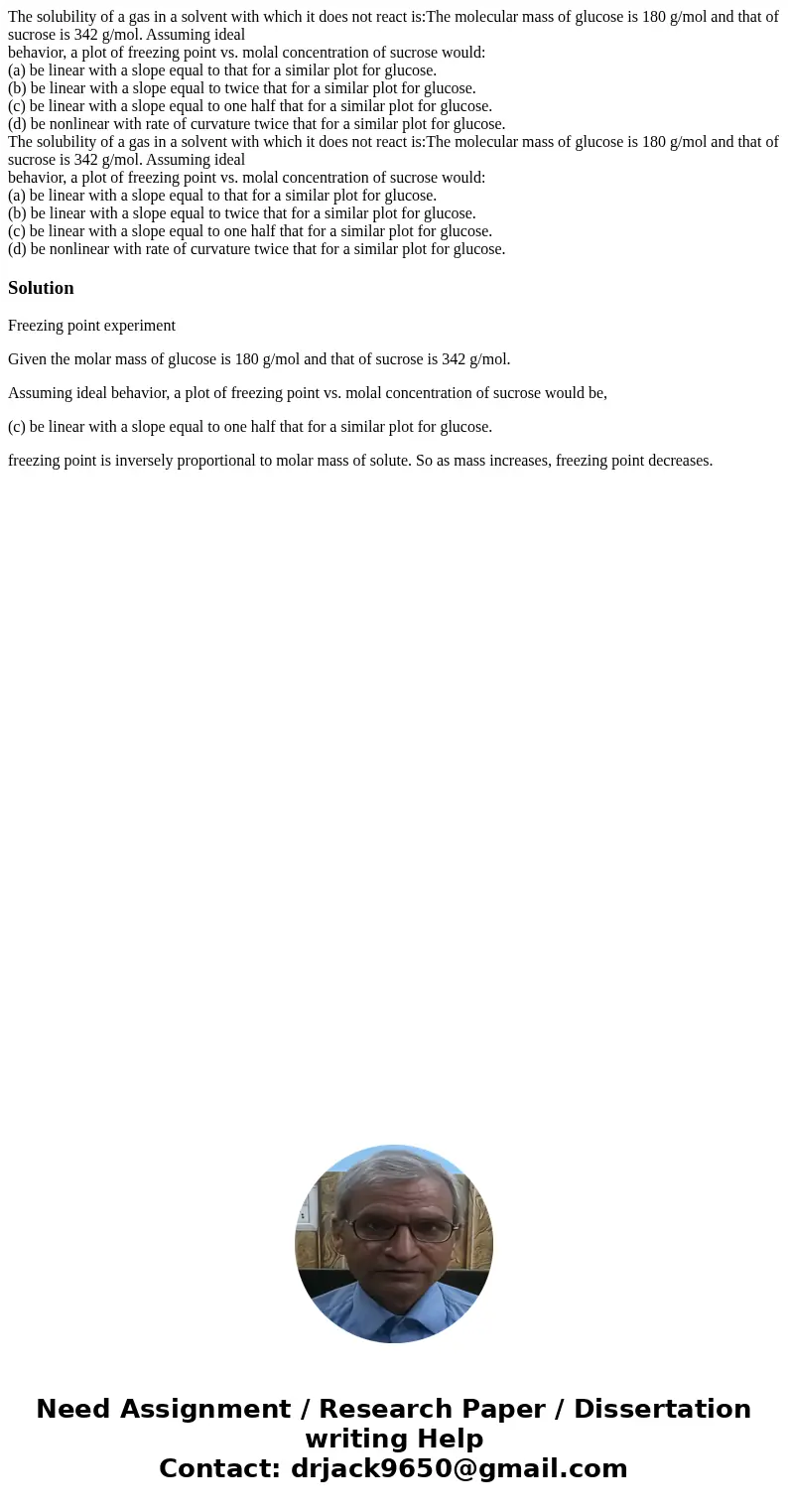The solubility of a gas in a solvent with which it does not
The solubility of a gas in a solvent with which it does not react is:The molecular mass of glucose is 180 g/mol and that of sucrose is 342 g/mol. Assuming ideal
behavior, a plot of freezing point vs. molal concentration of sucrose would:
(a) be linear with a slope equal to that for a similar plot for glucose.
(b) be linear with a slope equal to twice that for a similar plot for glucose.
(c) be linear with a slope equal to one half that for a similar plot for glucose.
(d) be nonlinear with rate of curvature twice that for a similar plot for glucose.
The solubility of a gas in a solvent with which it does not react is:The molecular mass of glucose is 180 g/mol and that of sucrose is 342 g/mol. Assuming ideal
behavior, a plot of freezing point vs. molal concentration of sucrose would:
(a) be linear with a slope equal to that for a similar plot for glucose.
(b) be linear with a slope equal to twice that for a similar plot for glucose.
(c) be linear with a slope equal to one half that for a similar plot for glucose.
(d) be nonlinear with rate of curvature twice that for a similar plot for glucose.
Solution
Freezing point experiment
Given the molar mass of glucose is 180 g/mol and that of sucrose is 342 g/mol.
Assuming ideal behavior, a plot of freezing point vs. molal concentration of sucrose would be,
(c) be linear with a slope equal to one half that for a similar plot for glucose.
freezing point is inversely proportional to molar mass of solute. So as mass increases, freezing point decreases.

 Homework Sourse
Homework Sourse